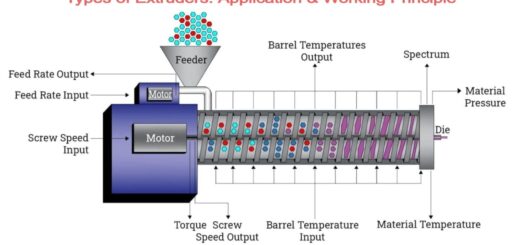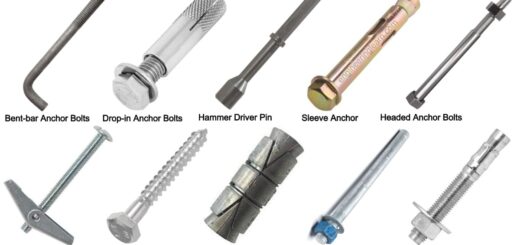16 Types of Moulding [Explained with Complete Details]
![16 Types of Moulding [Explained with Complete Details]](https://engineeringlearn.com/wp-content/uploads/2021/11/Moulding-1-1024x539.jpg)
Types of Moulding [Explained with Complete Details] :- A Mold is defined as hollow blocks that is filled with a liquid material and hardens inside the mold and adopts its shape. This process of manufacturing is known as molding.
Types of Moulding
There are following different types of molding-
1. Blow Moulding
When hollow plastic pieces are shaped and can be fixed with each other, then this process is known as blow moulding. It is also used for forming glass and bottles or other hollow shapes.
The blow moulding process starts with melting the plastic and forming it into a parison. The parison is a plastic tube with a hole at end for the passing of compressed air. Then parison is fixed into a mould and air is blown in it.
There are generally three types of blow moulding-
- Extrusion blow moulding
- Injection blow moulding
- Injection stretch moulding
2. Powder Metallurgy Moulding
Powder metallurgy moulding is defined as process of making materials and components from metal powder. It is basically used to construct different materials, impossible to acquire from melting or forming with other methods. It also allows the combinations of materials that would be impossible to mix and processing of material with high melting points.
3. Compression Moulding
Compression moulding process is a cheap moulding method as compared to the injection and transfer moulding methods. It is a high pressure forming process in which the molten plastic material is compressed directly into a hollow mould, with the help of heat and pressure to confirm the shape of the mould.
4. Extrusion Moulding
Extrusion moulding is defined as the moulding process which is used for manufacturing the moulding article with the help of die or thermoplastic material. In this the particle is liquified and forced through a die, and after this a long tube like shape is formed. For example- tubes, rods, strips, insulated electric cables etc.
There are two types of extrusion moulding-
- Vertical moulding
- Horizontal moulding
5. Injection Moulding
This is the most common, successful and widely used moulding method to create plastic products. In this method thermoplastic material is powdered or granular form is compressed in a pressure chamber. In this the material is compressed with the help of plunger or reciprocating screw. Then compressed material forced among the nozzle to a cold mould having cavity of desired shape.
For example – wire spools, bottle caps, toys etc.
6. Reaction Injection Moulding
Reaction injection moulding process is generally same as injection moulding but the difference is that in this thermosetting polymers are used. In this type of method, two highly reactive plastic liquid are mixed at high temperature and then injected into the mould cavity. Then some chemical reaction occurs after mixing and completes in few seconds and turns into foamed plastics. This is mainly used in medical, industrial and automotive industries.
For example – Dashboards switches and knobs etc.
7. Rotational Moulding
Rotational moulding, also named as ‘Rotomoulding’ is a process for manufacturing hollow plastic products. It is a high temperature and low pressure plastic forming process. In this type powder is inserted into the closed split mould and rotated in twiaxial direction to create a hollow part.
For example – sports equipments, toys, automotive parts, road cones and barriers etc.
8. Transfer Moulding
Transfer moulding is a designing process in which casting material is compress into a mould. This process combines the principle of compression and transfer of the polymer charge. Then resin is transferred from the transfer pot to the mould. In this there is no extra pressure is required. This type of moulding is known as transfer moulding.
For example – Gas valves, electronic circuits, pins, connectors etc.
9. Thermoforming Moulding
Thermoforming moulding is also known as ‘Vacuum Moulding’. Thermoforming moulding process is a designing process in which sheet is heated to a variable temperature and forms a specific shape from mould. In this vacuum pressure is used to form the heated thermoplastic sheet into the desired shape. And also there is a pressure forming process which is closely related to vacuum forming. The air pressure required is very higher as compared to the vacuum forming. Due to increase in pressure, the preheated plastic sheet can be deformed into the mould cavity in a very short time. Therefore formed part solidifies and is ejected from mould cavity.
10. FRP Moulding (Fiber Glass Moulding)
Fiber Glass moulding is also known as FRP moulding. In this process fiberglass reinforced resin plastic are organized into useful shapes. This process firstly makes a mould and then uses the mould to make fiberglass members. This method is mainly used to form complex parts with the use of fiber glass resin.
11. Hand layup Moulding
Hand layup technique is defined as the oldest, simplest and widely used composite processing technique. In this size of the job, size of work size of the product does not matter. In this process the fiber reinforcement are put in a mould by hands and resin is applied with a brush or roller. This method is least expensive open moulding technique. Hand layup process is mainly divided into two types-
- Dry layup process
- Wet layup process
For example- boat, tables, car bodies, overhead tanks etc
12. Resin Transfer Moulding
When the casting material is enforced into a mould then it is known as Resin Transfer Moulding (RTM). It is different from compression moulding. The mould is inserted slightly than open to sufficient plunger results in more dimension tolerance and minimum natural impact. Injection moulding is different as it has transfer moulding which uses more pressure to fill the mould cavity. In Resin transfer moulding the process of transfer have slower filling rate than injection moulding process.
The internal surface mould may be stiffen or gel-coated. The material which fills this may be solid or liquid. Once the mould is cooled at permissible rate for optimal curing. It is a modification of hand lay-up method. There are some of the items in this moulding process can be disposable.
Types of Resin Transfer Moulding
a) Vacuum Assisted Resin Transfer Moulding (VARTM)-
Vacuum assisted resin transfer moulding is used as half vacuum on one side of fibre to pull resin for saturation.
b) Micro Transfer Moulding
Micro transfer moulding also known as micro-moulding uses mould for transfer structure less than 30mm.
For example – Boat hulls, Wind turbines blades, Automobile parts
13. Vacuum Bag Moulding
Vacuum Bag Moulding is primary process for producing covered structures. It has a malleable film to cover the part and seal it from outer air. The vacuum bag material is formed in a tube shape or the sheet of material. The method of vacuum bag is costly, for this cost effective method is venture vacuum and air compressor method. Vacuum pump is used to form vacuum bag. The malleable material can be reusable silicon product.
Vacuum bag is a strong rubber coated fabric used to compress the part at time of cure or strengthen. By using tube shape bag the end of bag are covered by seal and air is passed out of the bag through the nipple by vacuum pump. These vacuum bag mouldings are used to separate curved and uneven shaped workspace. It is used to create same pressure under the form.
14. Bladder Moulding
Bladder moulding is used for those particular parts which have either difficult geometry, tight from outside or combination of all of these. In this method there are multiple number of tools used to make single part and then get bond together. When the sheet of the fibre are impregnated with the special resin then it is called pre-preg. By pressure it will make the bladder to expand which push the resin fibres. Applying heat to mould to make it solid part is called curing.
The bladder moulding is used where the degree of mechanical strength is required, in that place this moulding becomes essential. Other applications such as wind mill or wind generator energy have these moulding.
After the product is cured than the bladder is removed which make our product light, and strong hollow structure. This is suitable with –
- Vacuum assisted RTM (VARTM)
- Hand layup
- Oven curve
- Resin transfer moulding (RTM)
15. Spray Moulding
Spray moulding is the also called the spray-up, method or also known as open mould method which is similar to the hand layup method. This spray moulding method is used in for manufacturing of tanks, boats, shower, and tubs in very large types of shapes. This method is used for moulding complex shapes. The process of spray moulding is operated by the operator who controls the consistency and the density/ thickness due to which this process is more depends upon the operator than hand lay- up.
It has simple processing and use low cost tools. It also has portable tools/equipment which permits on-site fabrication. The process may also be automatic. The size of the moulds may range from small to very large, and the cost of moulds is also low in cost. The solution used for moulding in this are cured at room temperature. Surface in which moulding is performed is coated with anti adhesive.
The drawback of this moulding is that it gives a smooth surface finish on one side and rough surface on the other. It should not be used where higher degree of precision is required.
16. Matrix Moulding
Matrix moulding also known as matrix transfer moulding is method often used during moulding. The worker, who is doing this, will first assemble or create the outer rigid shell, and then use the softer or fluid moulding product between the shells. The process is also used in very complex shapes by using composite materials such as glass/ceramic composites.
In this technique a thin mould of silicone rubber is covered with the thick flask or shell made of plaster or fibre glass. It is very economical method of making a mould because you use the very less amount of silicone rubber: the rubber is most costly material in the mould.
Image Source :- nal.res













